|
|
|
|
| This software is designed by George Saon during his thesis. It is an adaptation of a random field to handwritten word recognition. The formalism combines the two-dimensional modeling of random fields and the assets of HMMs. the word image is regarded as the realization of a random field which in its turn is seen like a sequence of column observation. The emission probability of this sequence (which is in fact the probability of the image) is calculated by using the conditional probabilities depending on the state of the pixel. The neighbors used in each site in the states have all the same configuration. The pixel number of a neighbor gives the model order. These fields were applied on literal cheque amounts, written according to a restrictive syntax. The words are omniscriptors and the writing is unconstrained. |
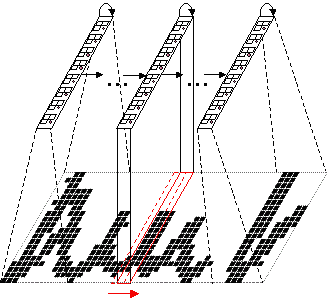 |
|
|
|
The system is trained on word images. The observation is made directly on the pixels without any interpretation. The training carried out is of type MLE. The functions Forward Backward were adapted in this case and were validated theoretically. Among the parameters of the model, one finds: the vocabulary { 0,1 }, the neighbor size, the matrix of pixels, the state number, and the probability matrices of observation and transition. The figure below shows the synthesis of the prototype "hundred" such as it was learned by the model. |
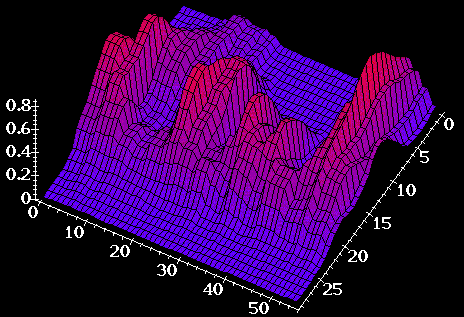 |
|
|
| Character Recognition
The first table indicates the various orders chosen for the neighbor. The second table gives the recognition rates according to the signal choice. The graph shows some comparisons with the Post office (SRTP), LIX, a traditional network of neurons and the answers of human. |
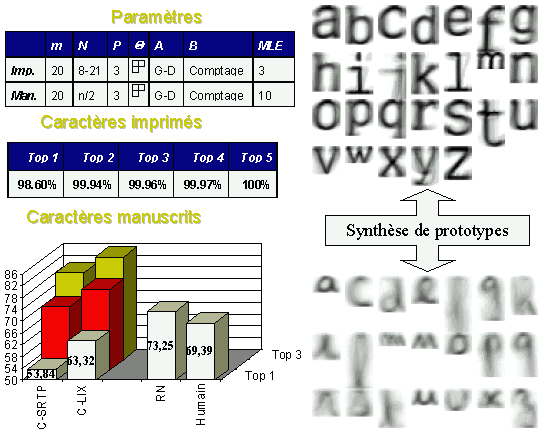 |
| Numeral Recognition
The first table indicates the various orders chosen for the neighbors. The second table gives the recognition according to the signal choice. The table presents confusion matrix which indicates that the results are of very good quality. |
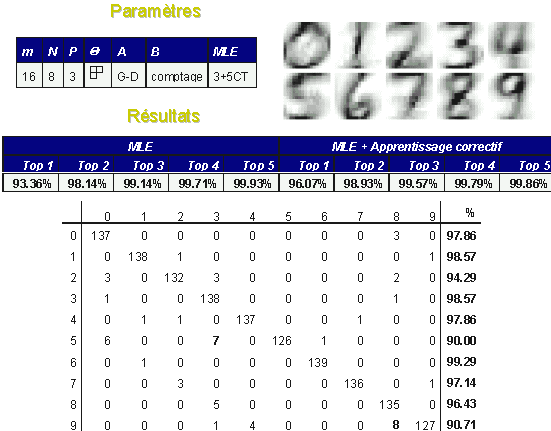 |
| Word Recognition
The first table gives the results obtained by
the organizations: SRTP, LIX and A2IA.. The two tables below show the comparison
between SRTP and A2IA. The figures on the right show some examples of words
on which we
|
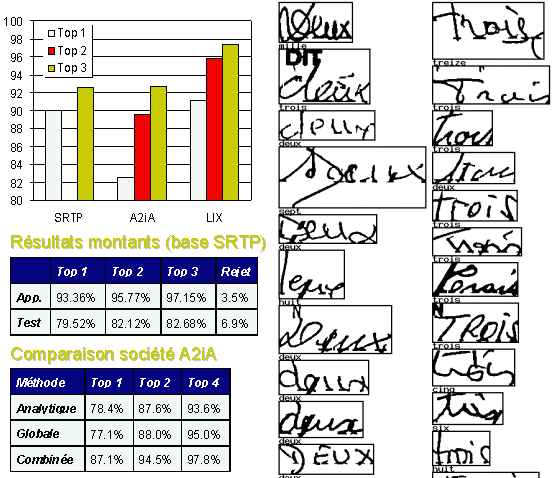 |
|
|
|
The Keyboard shows on the left-hand side the image of the word "centimes" selected by the system. On the right-hand side, one sees in top, the three best answers of the system where CENTIMES is in first, and in bottom, buttons for all the candidates, indicating by their positions, probability between 0 and 1. |
 |